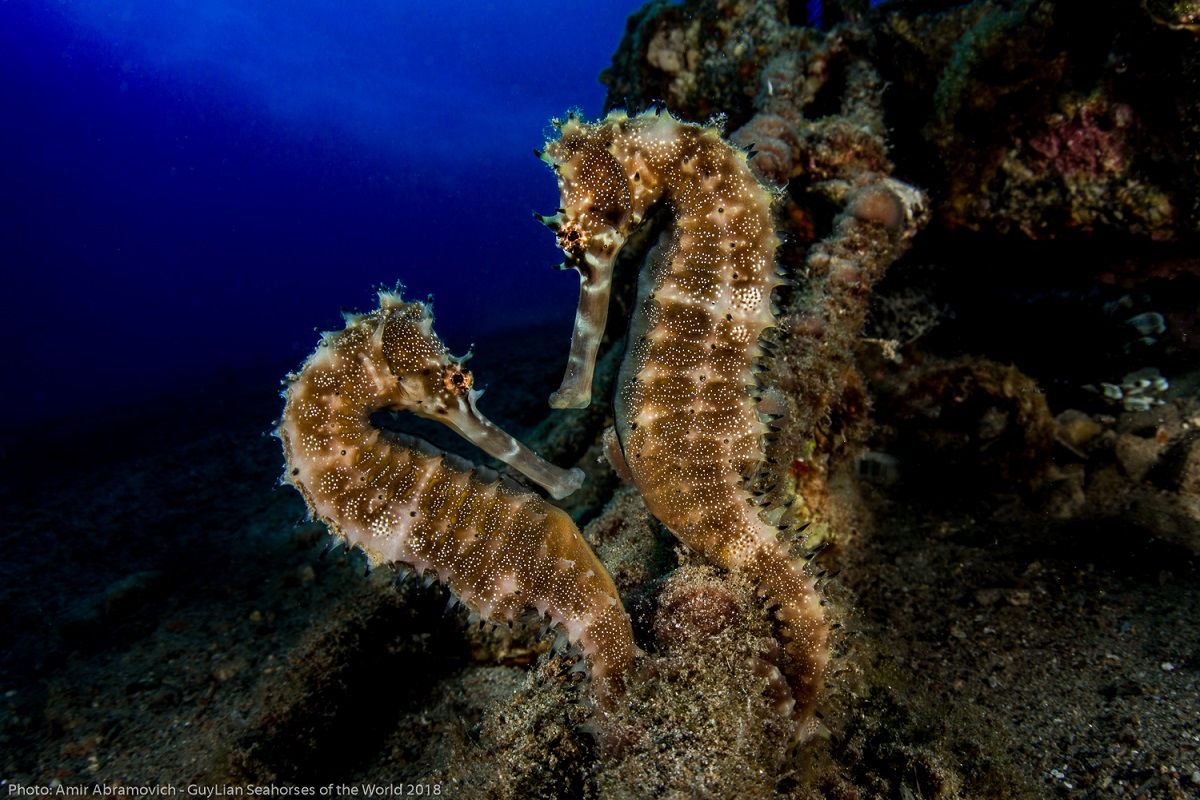
Photo by Amir Abramovich
Aah, true romance. When seahorses find a mate, they wrap their tails around each other so that the tide doesn’t drift them apart.
Other fun facts about the seahorse:
- Every morning, seahorse couples greet each other with a unique “dance” where they’ll promenade and pirouette together, sometimes changing colors. They engage in these daily intricate, rhythmic sequences of twists and twirls to strengthen their romantic bond and to ensure their reproductive cycles are properly synced.
- It is the male who becomes pregnant! After their complex courting dance during a reproductive cycle, female seahorses will place their eggs into an oviduct in the male’s body, which is housed in what’s known as a brood pouch. The gestation period lasts from 2-4 weeks. When it’s time for the babies to be born, the father’s body experiences strong contractions that expel the young out of his pouch. The number of seahorses born from each pregnancy averages 100 – 1,000 for most species.
- Baby seahorses are called “fry,” as in “small fry.” They are totally on their own from the moment of their birth. It is estimated that only 1 in 1,000 will survive predators to see adulthood.
- They feed on small crustaceans. Adults eat between 30 and 50 times a day, sucking in prey through their snouted nose, while baby seahorses eat an amazing 3,000 pieces of food a day.
- Seahorses are known for their exceptional eyesight, their eyes being able to work independently, which allows them to see both forward and back at the same time as their eyes are on the side of their heads.
- They are not the greatest swimmers. With only a lone dorsal fin to propel them, which must flap between 30-70 times a second, they are considered the slowest of fish. They have been known to literally die from exhaustion in a strong current. But they are maneuverable, being able to move and dart up and down and as needed.
- They can camouflage themselves, blending into whatever scenery they are around, or changing color to completely resemble whatever they have attached themselves to.
- They are considered endangered as they are hunted by the medicinal, curio, and pet trades. The Chinese, who use the seahorse as aphrodisiacs and cures for respiratory ailments among other things, harvest as much as 150 million seahorses a year. The curio trade accounts for about 1 million seahorse deaths a year, capturing them and killing them by drying in the sun (like many shells and starfish) to sell as souvenirs. The pet trade takes another million seahorses from the sea each year, though seahorses do not fare well in captivity.
We invite you to read this article from the Ocean Conservancy which includes even more fascinating facts about seahorses. When you do, be sure to scroll down to the end of the article to see why seahorses, along with all marine wildlife, are so desperately in need our help to provide them with safe, healthy ecosystems.


